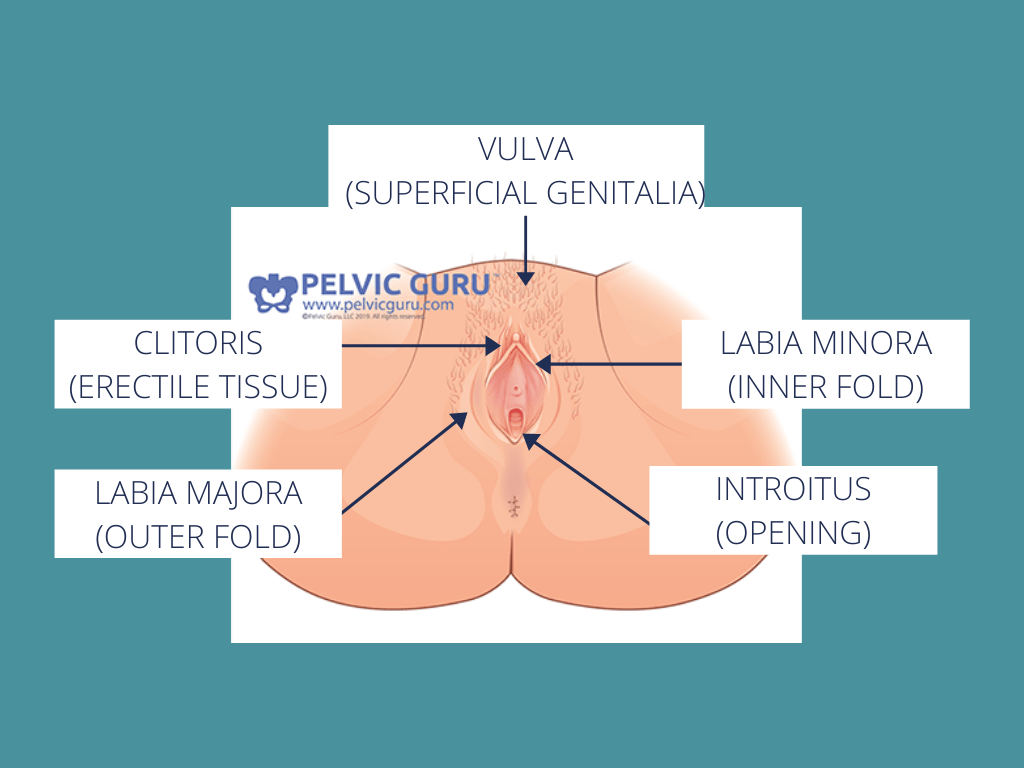Pints & Pelvic Floors: The Introduction
About two weeks ago I held the first Pints & Pelvic Floors meet-up/virtual happy hour/education session. If you would like to go back and watch it you can find that video here . In case you were not able to make it or prefer to read through what we discussed rather than watch the video, you will find the recap below. I hope you learn a few things and will join us for the next Pints & Pelvic Floors event when we will cover Polycystic Ovarian Syndrome (PCOS), Endometriosis, & Interstitial Cystitis.
Pints & Pelvic Floors: The Introduction
This is an inclusive and safe space. I will be using inclusive language throughout my talks to ensure I am speaking to everyone. If at any time you are confused as to what I am referring to please ask for clarification. If I misspeak please feel free to correct me, however I will try to be cognizant and I apologize in advance. I am continuing to learn, grow, and better myself daily.
I have seen this model for meet ups play out in a few ways but the greatest driving force for me with Pints & Pelvic Floors is to start having the conversations we wish we were having. Whether it’s:
- the things we wish we knew about back in school when we got our periods
- how to navigate consent and sex for pleasure
- what we truly like and don’t like about sex
- what to really expect when we are expecting
- what treatments were available after delivering a baby
- and much more
But this isn’t just for cis females – this group is for cis men too, and transgender people and non-binary people, and anyone who wants to know more about their pelvic floor. We will discuss erections, pooping, painful diagnoses and surgeries – literally anything else you want to know about. The topics are truly never ending and I hope they grow and change as this group becomes more defined. I want to bring together the talks you have with close friends, adult sex education, and evidence based information to create a better informed and self-advocating public .
By now I have probably used a term that confused some of you and you may be thinking “what’s a cis female?” Cisgender or ‘cis’ is the term used for a person whose gender identity matches their sex assigned at birth. I would identify as a cisgender female (or cisfemale for short). There is also transgender which is used by people who have a gender identity or expression that is different than the sex assigned at birth. Gender and sexual identity is a spectrum – not a binary as it is commonly referred to (female vs. male). We are not ONLY either female or male. People can identify in multiple ways including cisgender, transgender, gender nonconforming, gender non-binary, and gender queer.
So let’s start with the basics: anatomy! In each photo you will see the binary term for each structure (female or male) followed by an optional non-binary term in parenthesis to keep the language as inclusive for all as possible.
Now that you have seen images of the two typical anatomical layouts we could be born with at birth, let’s get into the aspects that pelvic floor physical therapy can help with. When it comes to physical therapy we work on the muscles, joints, bones, and other soft tissues that help connect things and keep us upright and moving. In reference to our genital and reproductive anatomy, pelvic floor physical therapy focuses on the pelvic floor muscles and their functions.
The pelvic floor muscles can be divided into the outside layer and the inside layer. All together they serve four functions:
- support
- sphincter
- suppression
- sexual response
The pelvic floor muscles lay at the bottom of the pelvic bowl and help support your urinary and reproductive organs from falling out. Failure to provide this support could lead to prolapse. The superficial muscles wrap around the urethra and rectum/anus to provide closure which prevents leakage of urine and fecal matter. The pelvic floor muscles also work with the brain and bladder to help decrease the urge or need to go to the bathroom. Lastly sexual response – having a properly functioning and strong pelvic floor can heighten your sexual response. So as if the thought of things falling out or leaking pee and poop isn’t enough, hopefully the knowledge that strong pelvic floor muscles can improve your sexual response will be enough to convince you it’s time to pay more attention to your pelvic floor and ensure it is doing its job.
Now here is where I find it imperative to address pelvic floor
Myth #1: Everyone should do Kegels.
You may think that when I say you need a functioning and strong pelvic floor this means I’m telling everyone to do Kegels. This is not the case. Not every person I work with in physical therapy needs to be stronger – some of my patients are having painful sex or leakage because their pelvic floor muscles are too tight or over engaged. This is why it’s important to recognize if you have issues with your pelvic floor: maybe you pee a little when you laugh with friends or are working out, maybe you have pain with penetrative intercourse, putting in a tampon, or with ejaculation, and maybe it’s just the constant need to pee – these things are common but not normal. If any of this describes you, or you have something else that doesn’t seem normal please see a pelvic floor physical therapist. Not every physical therapist can treat pelvic floor issues – just like you don’t want your family doctor doing open heart surgery. If you need help finding a pelvic PT near you just ask me and I’ll help out!
Myth #2: I should pee before I leave home just in case.
Nope! This actually disrupts your bladders ability to fill to a normal point before you get the urge to go. Think of it this way: if an item you want costs $500 but each time you save up $100 and spend it you will never get the satisfaction of buying that $500 item. If your bladder can hold roughly 500 mililiters of urine but you pee each time you have only 100 mililiters of urine, you never get that satisfying bladder void but you also train your bladder to think it can only hold 100 mililiters. Now you will start getting the signs to go to the bathroom sooner and you will not pee out very much.
Myth #3: Pelvic Floor issues are only for women.
See the images above of the pelvic floor. We all have pelvic floor muscles, we all have bladders and rectums, we all pee and poop. Anyone can have issues with their pelvic floor, their ability to void urine and stool, and if they are sexual, issues with their sexual health. Pelvic floor issues can happen to everyone!
Myth #4: Leakage is normal – especially after a baby or menopause.
Not true! While each of those times in a person’s life may increase the chance of it occurring, leakage is not normal. Our pelvic floor should function in such a way as to prevent leakage with exercise, laughing, coughing, jumping, and any other movements you want to make. If you are leaking urine or stool please see a pelvic PT.
Myth #5: Prolapse & abdominal separation (diastasis recti) require surgery to fix.
Again, this is false! Not all prolapse and not all abdominal separations require surgery. Both of these conditions can be considerably improved with strengthening, proper management of intra-abdominal pressure (think the way we breathe while lifting a heavy object or proper positioning and breathing during bowel movements), and increased knowledge of the condition. Before you agree to go under the knife, consult with a pelvic floor PT to determine if you can successfully achieve your goals without surgery. (My favorite example here is a patient who did not want surgery and only noticed her prolapse when she ran. She was fitted for a pessary by her GYN and only wore it when she ran. In PT we discussed ways to prevent making the prolapse worse during the rest of her day. She was able to avoid surgery because she was now able to manage her symptoms and meet her personal goals.)
Myth #6: At 6 weeks postpartum everything is fixed & you can return to normal.
Oh gosh if only this was true! While tissues are well into healing by 6 weeks, some parts may not feel fixed, and your new normal is very different from your old normal. Give yourself grace and realize each person’s birth story is different and each body is different therefore each recovery is different.
Myth #7: C-sections save you from having pelvic floor issues like leakage and prolapse.
Also not true! Having a c-section does not automatically rescue you from these issues. Pelvic floor dysfunction and prolapse have many causes – child delivery is only one of them. With a scheduled c-section and no pushing, you may have the benefit of avoiding the prolonged downward pressure onto the pelvic floor muscles that occurs with a vaginal birth. However, the pelvic floor muscles are still supporting the weight of your baby throughout your pregnancy and things can get weakened. Even if you have a c-section, you should see a pelvic PT after delivery to perform an evaluation of your low back, hips, and pelvic floor.
Myth #8: Straining to pee or have a bowel movement is normal.
Nope, not even close!! Both of these activities should occur without straining. If you struggle to start the flow of urine or completely empty your bladder you may have tightness in your pelvic floor muscles that are contributing. As for bowel movements, straining is the last thing we want. Try using a squatty potty, keeping a slight arch in your low back, and coordinating breathing out with passing stool to decrease the need to bear down or strain.
Myth #9: Having pain with sex is just part of life.
False! Sex should not be painful. Let me repeat that: sex should not be painful! No matter what your genitalia looks like you should not experience pain with penetration, pain with orgasm, pain with ejaculation, nor pain with touch. Common causes for painful sex include muscles that are too tight or guarded, scar tissue (especially at the vaginal opening), sex positions that cause deeper contact or stretching to various areas of the pelvic floor. If you have pain with sex please see a pelvic PT to address what could be causing the issue.
And there we have it: the recap of the first Pints & Pelvic Floors meetup. The big takeaway point here is know your body and know what is normal. If you think you may have any of the things we discussed above or questions about your pelvic floor get to a pelvic floor physical therapist. Don’t know where to find one? Try looking here.
If you enjoyed this information then join the
Pints & Pelvic Floors Facebook Group & attend the next Pints & Pelvic Floors meet up on Wednesday October 21st @ 8pm EST on
Facebook Live.
*Please be aware the above information is intended for educational purposes only and is not meant to serve as medical advice.*
Where to find treatment in Maryland
At Pelvic Pride Physical Therapy & Wellness, we specialize in the treatment of ALL pelvic floor conditions! We are conveniently located in the Federal Hill neighborhood in Baltimore MD. Fill out our contact form & our Patient Care Specialist will reach out to you ASAP!
Next on Your Reading List
Love our content? Let's stay connected!
Subscribe to our newsletter for personalized updates when new blog posts are dropped.












